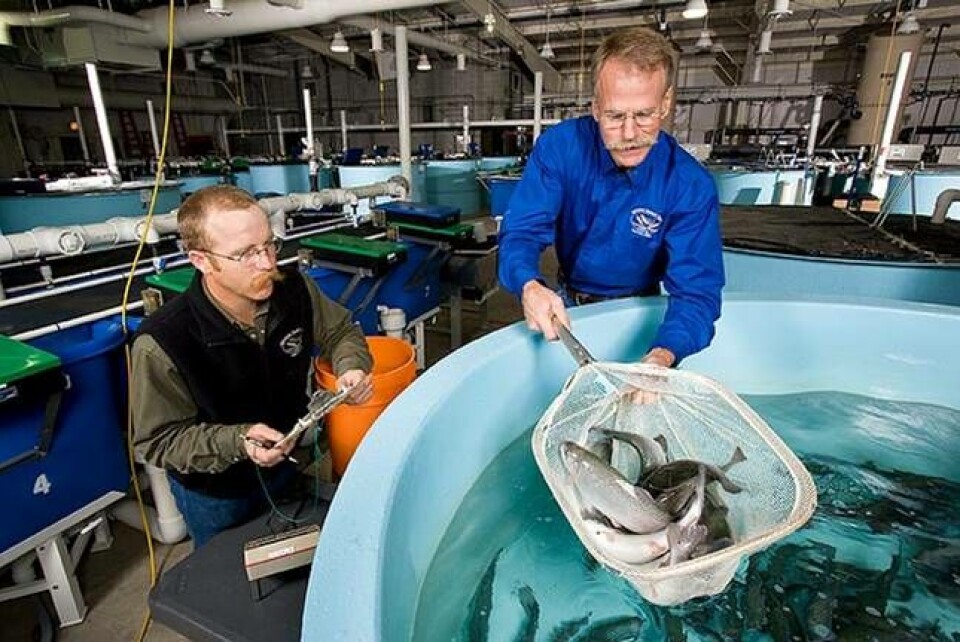
Fish-free feed shortlist revealed
Eight teams which are currently attempting to develop fish-free feed for the aquaculture industry are in the running to win a prize worth over $200,000.
The F3 Fish-Free Feed Challenge was launched in November 2015 to encourage innovation of alternative ingredients for aquafeeds, improve the industry's sustainability, and to reduce pressure on wild-caught fish. The contest is intended to help catalyse the development and sale of cost-competitive, viable aquafeeds that are free of fishmeal and fish oils.
The first company to produce and sell 100,000 metric tons (MT) of aquafeeds that do not contain marine animal meal or oil will be awarded over $200,000 to support their fish-free aquafeed business. If none of the contestants have met the 100,000 MT target by September 15, 2017, the prize will go to the company closest to the target.
Contestants , who were announced yesterday (15-11-16) range from companies with their own mills and farms with multinational sales and hundreds of employees to start-up farms and ingredient companies with just a dozen employees. Farms and ingredient suppliers partnered with feed mills to form larger teams. Companies submitted feeds for a range of seafood including shrimp, tilapia and trout.
Motivation
The UN Food and Agricultural Organization (FAO) reports indicate that, by 2030, 25 per cent less wild-caught seafood will be available than today and a similar shrinkage will occur in aquaculture unless it can overcome key constraints, including a shortage of fishmeal for feeds. The FAO estimates than over 18 million tons of wild-caught fish are used each year to make fishmeal and fish oil.
“While the global aquaculture industry has made strides to stretch the limited amount of fishmeal and fish oil to rear more fish and shrimp, there is a severe need to find alternatives to these marine products to feed aquaculture-raised fish,” said University of Arizona Professor Kevin Fitzsimmons, the former president of the World Aquaculture Society and lead spokesperson for the F3 Challenge.
Fisheries models only focus on the amount of wild-caught fish removed year after year to predict yield for commercial fisheries. These models do not account for the impacts to the species that depend on forage fish, such as marine mammals, seabirds and larger fish. Fisheries managers may need to further limit catches of forage fish so that commercial fisheries for larger fish, such as cod, tuna and salmon, will continue to exist.
Eight registered teams have submitted a specimen of feed that they want to qualify for the contest, which are currently being analysed to ensure they are free of fishmeal and fish oils.
The first company to produce and sell 100,000 metric tons (MT) of aquafeeds that do not contain marine animal meal or oil will be awarded over $200,000 to support their fish-free aquafeed business. If none of the contestants have met the 100,000 MT target by Sept. 15, 2017, the prize will go to the company closest to the target.
The Monterey Bay Aquarium, New England Aquarium, University of Arizona and World Bank are sponsoring the challenge, with additional donations to support the administrative costs of running the prize.
The contest arose out of discussions first held at the 2015 World Aquaculture Society meeting in Busan, Korea, between Fitzsimmons and several environmental non-profit organizations, and demonstrates how industry and environmental groups can come together to achieve the common goal of developing cost-effective substitutes.
An intention of the contest is to ensure that the feeds are at least as nutritious for the farmed-raised seafood being fed and that the final seafood produced is just as nutritious for consumers.
“Eventually we would like to see that fishmeal-free seafood would be considered as sustainable and good for the environment as grass-fed beef or free-range poultry,” said Fitzsimmons.
Teams are expected to report their first quarterly sales figures in January 2017. The F3 Challenge team is optimistic that the 100,000 MT target, which would represent a major milestone in validating the market viability of fish-free feeds, will be met.























































